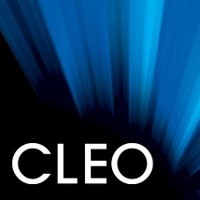Citation
C. Chen, C. Lin, Y. Su, C. Huang, and B. Wu, "Broadly Tunable Dual-wavelength Semiconductor Laser In Optical-communication Band," in Conference on Lasers and Electro-Optics, M. Fejer, F. Leonberger, J. Fujimoto, and S. Newton, eds., OSA Technical Digest (Optica Publishing Group, 2002), paper CWK2.https://opg.optica.org/abstract.cfm?URI=CLEO-2002-CWK2
Abstract
The coming of the information age dramatically increases the requirement on data transferring, so broadband property is highly desired, leading to the development of WDM communication system using optical fibers. Nowadays, the mainly used bands in fibers are near 1.55 μm and 1.3 μm, which has the lowest loss and the minimum dispersion, respectively. Recent research had further reduced the hydroxyl absorption near 1.4 μm in optical fibers. Hence a very broad bandwidth of 300 nm can be utilized for communication in the future. At the present time, the wide Er-doped fiber amplifier can amplify both the C-band (1530 nm~1565 nm) and L-band (1565 nm~1610 nm), but it cannot amplify the band near 1.3 μm.1 To fully exploit the abundant bandwidth of optical fibers for future WDM system, other techniques are required. Semiconductor lasers/amplifiers using multiple-quantum-well (MQW) engineering2−4 thus provide alternatives for the broadband purpose. This work reports the successful use of nonidentical MQWs to achieve simultaneously lasing at two wavelengths. The two wavelengths are between 1344 nm to 1514 nm, with the spectral separation tunable from a few nanometers to 170 nm.
© 2002 Optical Society of America
Access
To view this article you will need to login or make a payment.
If you have arrived on this page from an external web site and wish to view the official article abstract first, click on the link above.
If you are already logged in but arrive at this page, it means you do not have paid access to this content. Instead, you may purchase a Pay-Per-View PDF of the article or Recommend this title to your librarian.
This full-text PDF is available as a Pay-Per-View article purchase at the rates listed below.
Optica Members: $15/article
Non-Optica Members: $35/article
Pay-Per-View Purchase provides access to a PDF of the full-text.
Purchasing the PDF does not enable access to the Enhanced HTML article text, online References, Cited By, and Article Metrics which are only available via subscription access.
Full-text PDFs of conference papers are available to Optica Publishing Group subscribers or through one of the purchase options mentioned on our subscription page. Note that full-text PDFs from conferences typically contain 1-3 pages of content, some or all of which might be an abstract, summary, or miscellaneous items.

